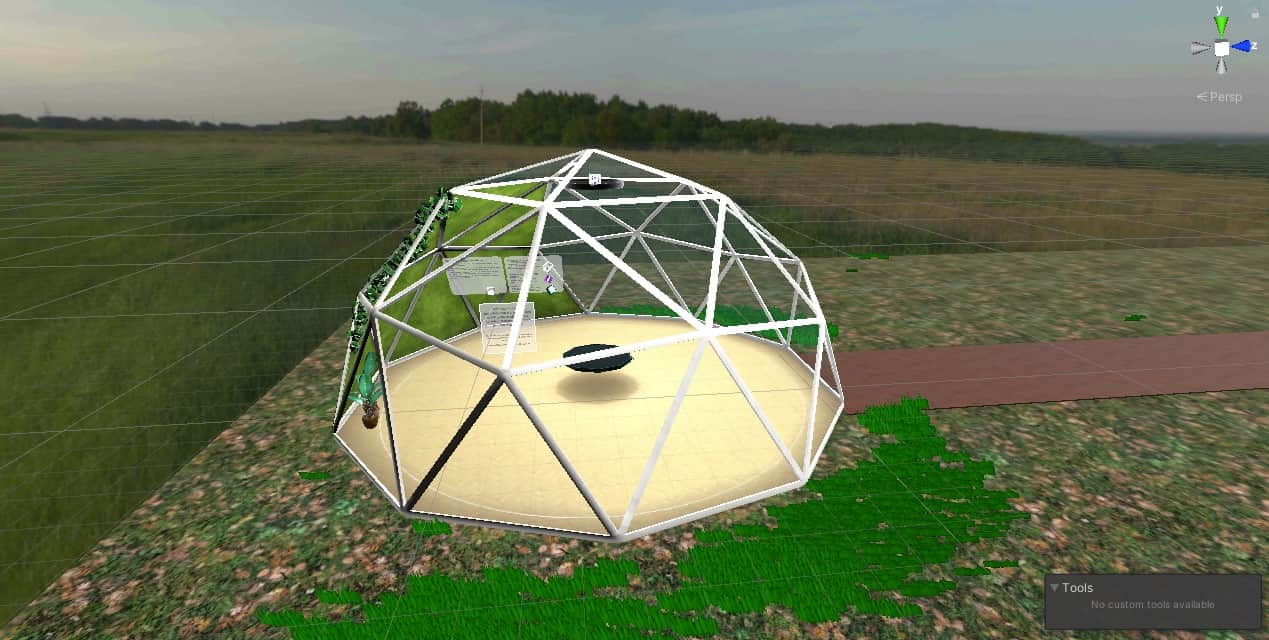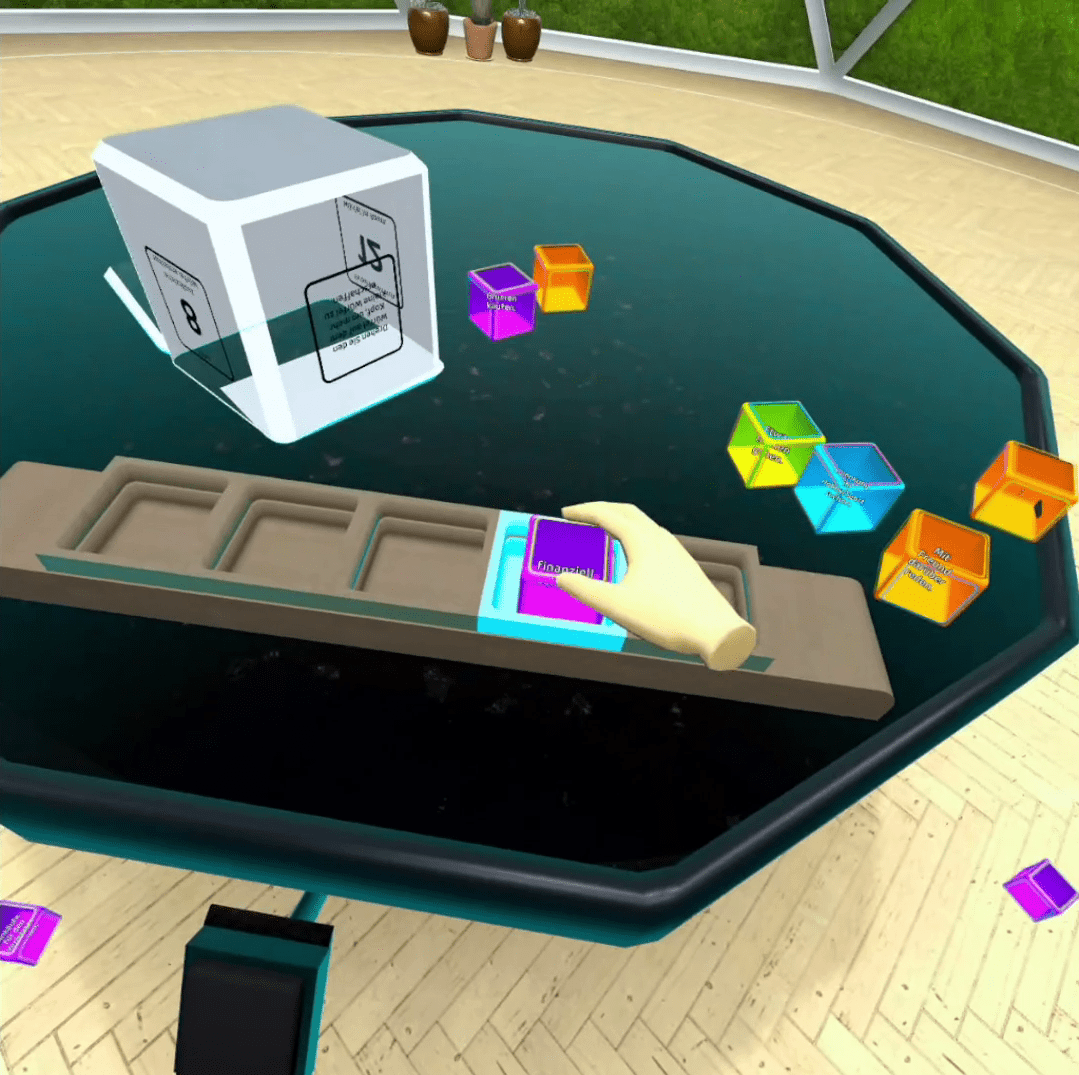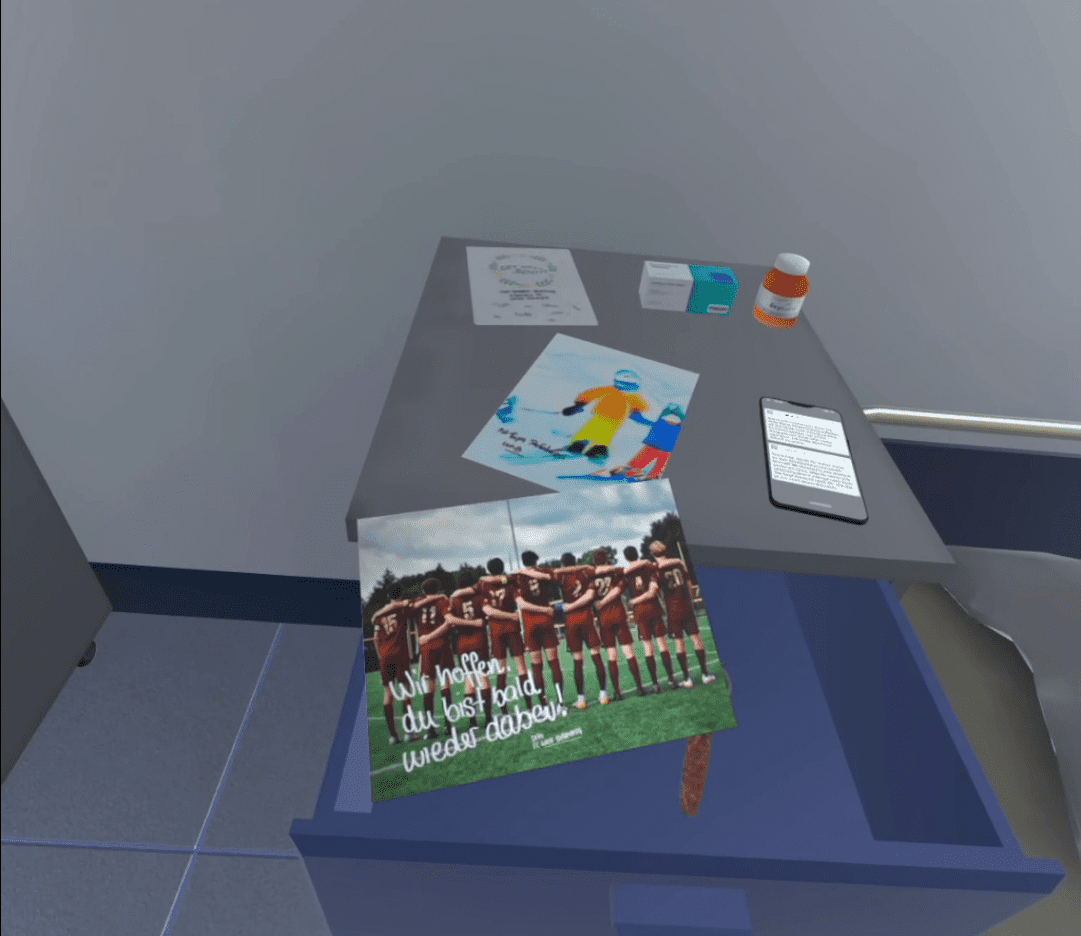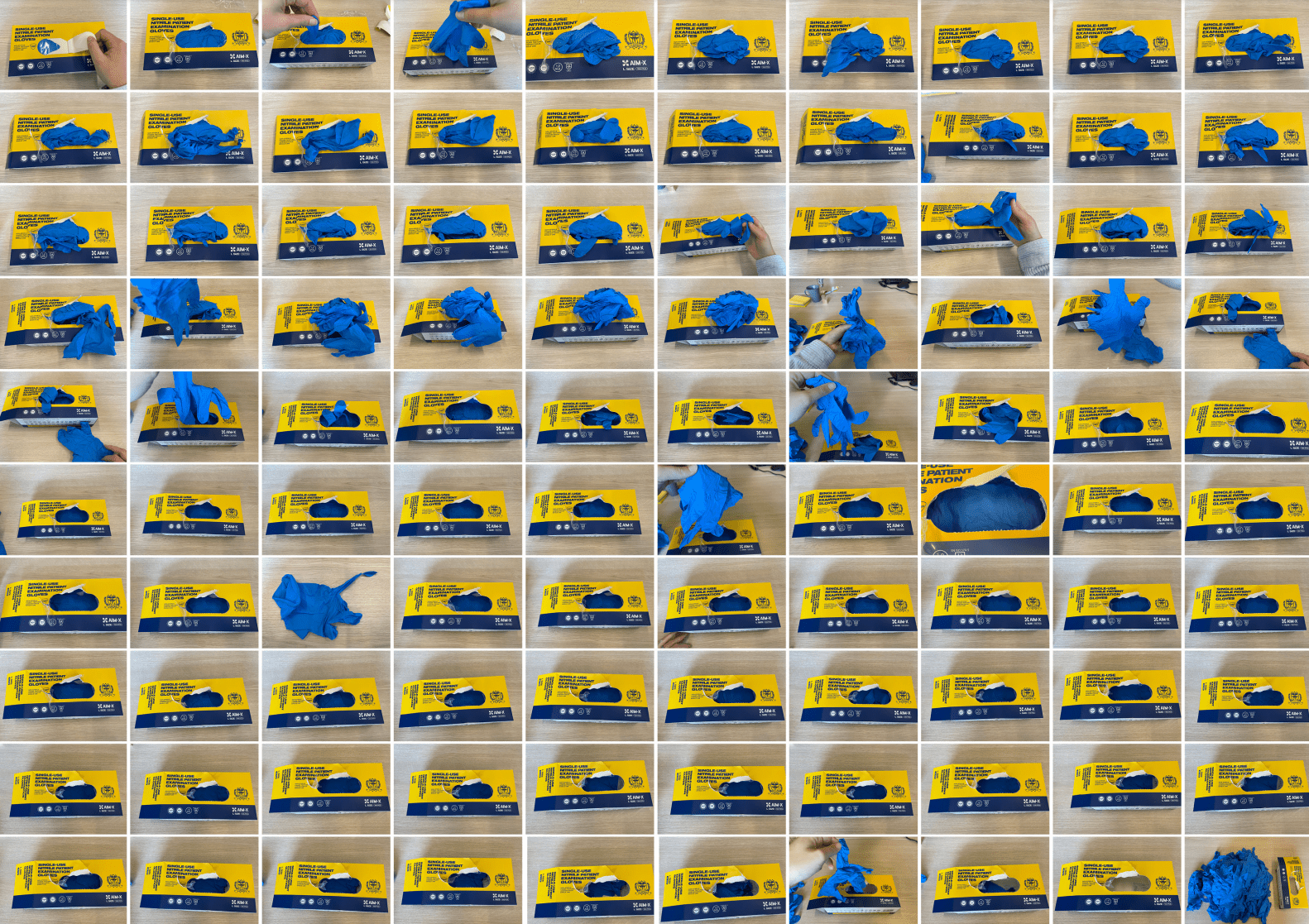
Resilience has become a much-discussed skill in times of crisis. If psychological resilience is present, it helps to cope with high levels of stress. However, the potential for resilience can also be strengthened. Psychotherapy has already proven this. Now, a team of researchers at the AIT Austrian Institute of Technology in Vienna investigated whether the effect of resilience training can be increased even further with the use of virtual reality (VR). This is because VR enables realistic experiences in a safe and controllable environment.
In addition, challenging situations can be repeated as often as desired using VR. This makes it possible to discover and learn new courses of action. We don’t have this opportunity in everyday life, explains Ulrike Kretzer, who led the project at the AIT Center of Technology Experience.
Logotherapy and existential analysis
The project ran under the title ReSolVE – Resilience Strengthening in Virtual Environments through Meaning-Finding – and is based on the teachings of Austrian neurologist, psychiatrist, and Holocaust survivor Viktor Frankl (1905-1997). He is considered the founder of Logotherapy and Existential Analysis (LTEA), which became the globally recognized approach to psychotherapy. The aim of the method is to support clients methodically in their search for the meaning of life. The cooperation partner was Digital Media Support, a consulting and implementation agency focusing on digitalization in parenting and adult education. The two founders, Alex Vesely and Katharina Ratheiser, are grandchildren of Viktor Frankl and work at the Viktor Frankl Institute in Vienna.
The project explored whether the approaches and methods of logotherapy and existential analysis are at all suitable for VR training. The training content was based on two different forms of psychosocial crises: Change Crisis and Loss Crisis. In the case of the change crisis, the subjects were put in the situation of having caused a car accident in which a person was harmed. In the case of the loss crisis, it was about the personal experience of job loss.
The VR training was designed and developed using a co-creation process. In this, future users were actively and creatively involved in the design and research processes to ensure that a technology-enhanced experience was created that was meaningful to them. Overall, the training was designed for perspective change and reflection in the spirit of Viktor Frankl. The experiments were accompanied by Alex Vesely and Katharina Ratheiser from the Digital Media Support agency.

Escape room
In order to immerse the test persons in the respective situation, the VR-supported resilience training was structured playfully. For example, there was an Escape Room in which a wide variety of objects could be interacted with in order to engage with the storyline. When a test person picked up an object with the controller, a voice played an explanation about it.
In the car accident scenario, the focus was on processing feelings of guilt. The test subjects found themselves in the hospital room of the accident victim. By touching individual objects, they were presented with details of the accident. In this way, they could become aware of the consequences of the accident and empathize with the accident victim. For example, there was a picture of the accident victim’s young daughter who has to be supervised by her grandparents while her mother was in the hospital. The way of interaction with the objects was up to the subjects.
The scene of job loss was presented in the form of a 360-degree video. In it, subjects could experience the layoff situation from the perspective of the person being laid off to empathize with their problems.


Room of possibilities
Subsequently, the test subjects of both scenarios came to the Room of Possibilities, where they could once again reflect on the situation they had previously experienced. In doing so, they could consider and evaluate various behavioral options according to the criteria of logotherapy and existential analysis. Communication tools were 3D cubes that presented the test subjects with an individual selection of options. However, there were also cubes on which they could attach their own options. Finally, rating scales were available to help them categorize the most relevant behavioral options as should, can, must, and will. “Behind decisions there is often an unconsciously belief you have to do this now. But you might feel much more comfortable with a completely different decision,” Kretzer explains.
Expanded dimension
After completing the project, the researchers saw their concept confirmed by the positive feedback from the test subjects. In the beginning, a slight distraction could be detected due to the technology. However, this effect diminished with further applications, and the benefits of the technology became more apparent. The virtual reflection rooms gave the test persons the opportunity to intensively deal with their own experiences. In doing so, they offered an extended dimension for interpretations and for the introduction of one’s own thoughts and feelings. Especially in the room of possibilities, the potential of VR technology to stimulate creativity became apparent. The test persons stated that they had gained a completely new view of things.
However, the researchers do not see VR-based resilience training as a substitute for the therapist. Rather, they say, it can help therapists make their training more effective. “Clients can gain a lot of insight from therapy conversations, but the behavior also needs to be practiced. With the VR tool, they can replay the behavioral options at home to reflect on them together again at the next session,” says project collaborator Huu-Quynh-Huong.

Individualization
Further down the line, Nguyen said, the goal is to make VR-based resilience training selective in order to adapt it to the individual needs of people. The individualization could be realized by developing an AI-based suggestion framework. That’s because the researchers already know from other studies that optimal training plans can be developed from biometric data such as pulse and breathing rate, as well as training preferences.
